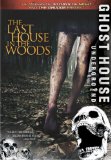| Reviews & Columns |
|
Reviews DVD TV on DVD Blu-ray 4K UHD International DVDs In Theaters Reviews by Studio Video Games Features Collector Series DVDs Easter Egg Database Interviews DVD Talk Radio Feature Articles Columns Anime Talk DVD Savant Horror DVDs The M.O.D. Squad Art House HD Talk Silent DVD
|
DVD Talk Forum |
|
|
| Resources |
|
DVD Price Search Customer Service #'s RCE Info Links |
|
Columns
|
|
|
Last House in the Woods, The
- director Gabriele Albanesi
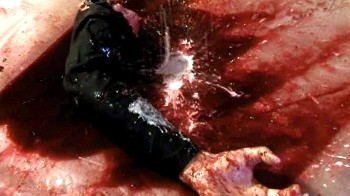
The Movie
Awww, Jackson would be so proud! Wow, where do I begin? When Gabriele Albanesi finished writing "Swerve"--now renamed, no doubt, to attract fans familiar with similarly titled Last House exploitation efforts--he was just 22 years old. It took four more years for the film to be finished and released in his native Italy, and it now finds life in North America as part of Lionsgate's new "Ghost House Underground" label.
It's quickly obvious that Albanesi lacks vision, and isn't quite sure how to pull together his scattershot ideas (jump to the Extras section below to read about his almost innumerable influences), resulting in an amateur effort that's cheap in almost every way: acting, camerawork, script, editing and effects. The only mildly entertaining part is the last half hour, which is still an exercise in bargain basement gore.
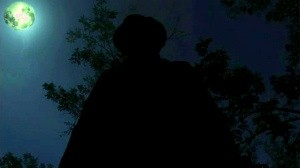
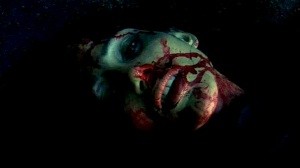
After a car accident leaves a driver dead, his wife runs for help--and is murdered by a mysterious figure on the road as her son flees into the woods. We jump ahead to meet young on-again/off-again lovers Aurora (Daniela Virgilio) and Rino (Daniele Grassetti)--highly annoying characters from frame one (the two engage in a back-and-forth "she loves me/she loves me not" exchange that will have you begging for their demise). You won't care about either one of them, which doesn't help matters later.
After having sex in his car, they're accosted by three obnoxious meathead goons--played by actors who read their lines so loudly and with such exaggerated, stereotypical accents, I was convinced they weren't actually Italian. They engage in non-stop juvenile banter, speaking like horny 12-year-old assholes who repeatedly insert words like pussy, fuck and fag into their shouted lines.
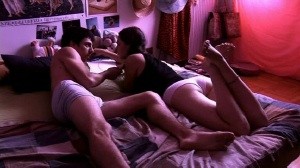
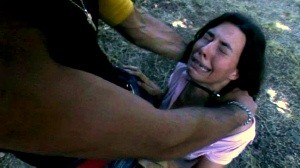
They beat the lovers up and are about to take it further when mysterious couple Antonio (Gennaro Diana) and Clara (Santa De Santis) drives by and saves the victims. Despite being sexually assaulted with a knife at her throat, Aurora decides not to call the police (!) and not to get back in her car and drive home with Rino (!!). At Antonio's suggestion, the two head to the couple's house to "settle down for a bit," at which point I threw a tomato at my TV.
When the couple arrives at the home, all hell soon breaks loose. The ensuing bloody sequence of events has a lot in common with The Texas Chain Saw Massacre, and the cheap, gory proceedings provide a small amount of cheesy entertainment. But it takes a long, agonizing time to get there. One of the biggest problems with the film is the script and performances. It's almost like the actors were directed to talk slow--or even worse, not at all (just stare at each other!)--in an effort to pad the running time to reach feature length, making the characters just seem awkward.
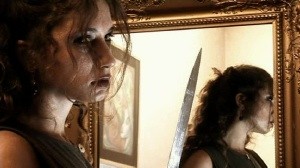
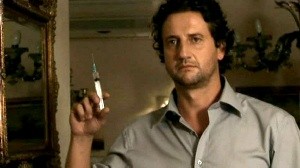
The film was made cheaply, and it shows. Many of the night sequences were filmed during the day and altered in post-production, resulting in fake-looking scenes that are silly, not scary (look for odd patches of bright light, and reflections on car windows). You also get a bevy of fade-to-black cuts that feel like intros to commercial breaks.
Additionally, much of the camera work is a hand-held Hokey Pokey of a mess. The frantic zooms, pans and shakes are a poor attempt to disguise low-budget stunts and effects (you even get a POV shot of someone running after Aurora in the woods). Albanesi frequently keeps the lens uncomfortably close to the action, which only highlights the awful acting from most of the cast (this is not only Virgilio's first film, but the first thing she ever auditioned for--and it shows). Throw in some out-of-focus shots and it's tortuous (not in the good way).
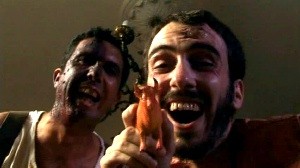
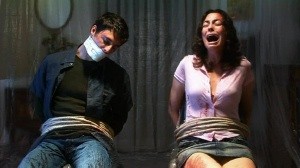
The most embarrassing moment comes 33 minutes in: Moments after Aurora notices that the thumb on Antonio's left hand is missing, we see him get up out of his chair and turn around--the camera catching the actor tucking his thumb into his hand (sigh...look alive editors!)
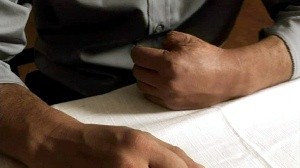 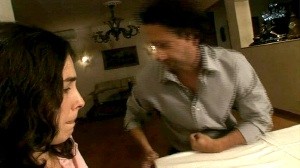 |
| |
There's also a child actor who isn't up to the task of being creepy, and some ridiculous scenes when the three goons re-enter the picture as (potential) accidental heroes: "They were banging a girl, right? Now we go in and we bang the girl! We beat up the men, we bang all the ladies and we walk out with all their fucking DVD players!" (I'm holding out for a hero, boys! Hurry up!) Then after one of them gets killed, Goon A tries to cheer up Goon B by reminding him that he has a big dick, giving him drugs and then (are you ready for this?!) splitting up. It's a development that even Albanesi can't explain in the commentary: "It doesn't make any sense to split up, it's true," he says. "[But] if you don't split up the two characters, then you don't know how to kill them." (Bravo, Gabriele!)
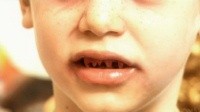
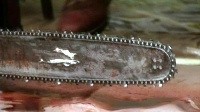
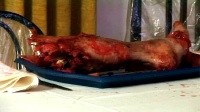
The final 30 minutes of the film have a mildly amusing energy and might entertain you if you're a little drunk, but the setup is so nonsensical, slow and amateurish, it's ultimately a waste of time. In 2008, any film that adopts the overused Last House... moniker is clearly trying to compensate for its cheapness and lack of originality, and this entry is no exception.
Note: The Last House in the Woods is one of eight films--available individually and in a boxed set--being released October 14, 2008 on Lionsgate's new "Ghost House Underground" label. The other films on the label are Brotherhood of Blood, Dance of the Dead, Dark Floors, No Man's Land: The Rise of Reeker, Room 205, The Substitute and Trackman.
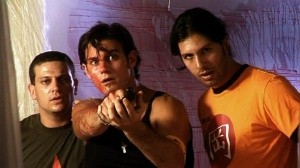
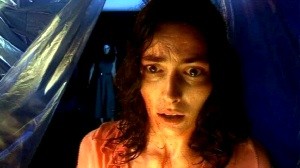
The DVD
Video:
The anamorphic 1.78:1 transfer further shows the film's modest budget. I'm guessing this looks the way it's supposed to, which is cheap. A lot of that is due to the director's filming choices (night scenes filmed during the day, then corrected in post; zooms which result in a few blurry shots). The colors are frequently off (a few tints pop up every so often), and most of the dark shots (which are plentiful) are way too dark and lack definition, with lots of grain and noise present throughout.
Audio:
You can chose between an (awful) English dub or the original Italian 2.0 track, which is adequate but suitably unimpressive. The balance isn't perfect, but thankfully the score isn't overpowering. English and Spanish subtitles are available.
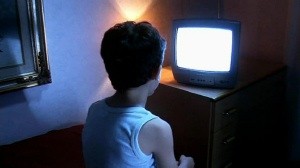
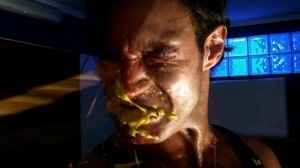
Extras:
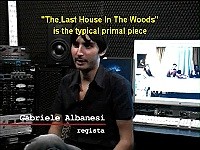 Here's where things get good. Leading the way is an Italian audio commentary (with English subtitles) from director Gabriele Albanesi that's so unashamedly audacious, my jaw dropped further each minute. That's because he rattles off an endless list of influences (blink and you'll miss one!), proving that the young, enthusiastic director doesn't have his own voice or vision. He relies on a horde of other artists (some of which you'd never guess) to paste together this film. I'll let his words speak for themselves (this is going to take a while, so get comfy):
Here's where things get good. Leading the way is an Italian audio commentary (with English subtitles) from director Gabriele Albanesi that's so unashamedly audacious, my jaw dropped further each minute. That's because he rattles off an endless list of influences (blink and you'll miss one!), proving that the young, enthusiastic director doesn't have his own voice or vision. He relies on a horde of other artists (some of which you'd never guess) to paste together this film. I'll let his words speak for themselves (this is going to take a while, so get comfy):
- "The atmosphere reveals some influences. Clearly you can see Lynch's Mulholland Drive...the music reminds us of the music from Lynch's movies, especially Mulholland Drive."
- The opening scene in the car "comes from the opening scene of Polanski's first movie, Knife in the Water...[and] also the opening of Blood Simple."
- The early death of two characters, played by apparently well-known actors, is "a bit like Wes Craven's Scream."
- "Here we have the moon, which was added in post-production, with a 'comic like' feel--Sam Raimi's style."
- "The whole prologue is following the opening scenes of Argento's movies...there was also a taste of the first two movies from Tarantino, Reservoir Dogs and Pulp Fiction."
- "We have this sequence...with the virtuous and elegant camera movement, which reminds us of Paul Thomas Anderson--obviously in an amateurish way."
- "Here there is a flashback, Sergio Leone style."
(Folks, that was just 10 minutes in!!!)
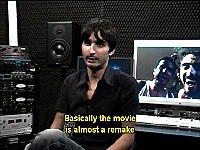
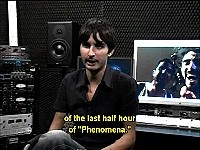
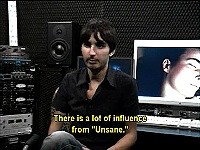
- "The inspiration for this sequence was the frivolity of some movies from the French 'Nouvelle Vogue', so the first movies of Godard."
- "For the three dudes from Rome, the reference was that of the droogs in A Clockwork Orange. There is also a reference to the punk group in Lamberto Bava's Demons."
- "The style here, I realized later, I came up subconsciously while watching Eyes Wide Shut."
- "The idea of this movement of seduction came from--although a bit different--Michael Mann's Heat."
- "These cold tracking s hots of the subjects that define the environment were inspired by Manhunter, once again by Michael Mann."
(How y'all doin? Need a break?)
- "The character that reluctantly gets closer to the victim...is inspired by Vampira [aka Martin] of Romero."
- "These shots are very Dario Argento...it reminds us of Suspiria."
- "Here there is the last look between the two lovers...which reminds us a little bit of the last glance between Bonnie and Clyde."
- "In Torso, there is a long chase sequence that, if I'm not mistaken, is done with the 'night effect'."
- "Here we enter a scene with a sort of atmosphere that reminds us of Texas Chain Saw Massacre or The Hills Have Eyes."
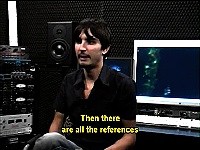
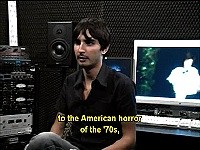
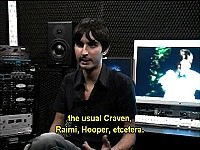
(Get ready...this next one's a doozy!)
- "We have the part with the family, which is almost a remake of 'The Last Supper' by Leonardo."
- "This sequence...follows two major references in terms of shooting: Scarface and Reservoir Dogs."
- "(One actor) reminds us of a tragic character from Pasolini, who even while dying says a funny line."
- "This is a pose I took from a novel by Tiziano Sclavi, Sogni di Sangue."
- "Here we have the yellow color that splashes on his face. The inspiration here comes from Sam Raimi's The Evil Dead."
- "There is this cut...which is to remind us of the more famous one from The Searchers when John Wayne hugs little Debbie."
(Anyone have a hankering for a snack cake?)
- "The reference I gave...was the one of Aja's High Tension."
- "The movements are a little bit like...I asked her to do Shelley Duvall in The Shining."
- "This sequence--again, a duel in the style of Sergio Leone--was inspired by the final duel of Once Upon a Time in the West."
- "(This) reminds us of Boxing Helena and Tod Browning's Freaks."
- "She slips in the blood here...a homage to Scorsese's Cape Fear."
- "There is a sense of desperate romanticism, almost like Lynch. We were thinking along the lines of Wild at Heart."
Seriously folks, I didn't make any of this up. And I didn't even list the repeats, because many films (like A Clockwork Orange) and directors (like Argento and Leone) get frequent references. Albanesi also inspires himself (!), noting many sequences were influenced by his own short films. He later adds that he wanted a clear Italian identity for the movie (?!), and shares how getting it made wasn't easy: "Definitely a difficult movie to put together and shoot, since clearly due to the theme of the movie no producer wanted to get involved." (Because this is an audio commentary, I can't tell if he says that with a straight face).
He later makes a comment on the film's gore that had me equally dumbfounded: "Regarding the violent scenes, the majority of them...I preferred keeping them out of frame. I always wanted to respect the morality of what was being shown. I'm against gratuitous violent scenes, or useless satisfactions." (uh, what about those entrails, Gabriele?). He also says the evil family becomes sympathetic at the end, noting that you're supposed to feel sorry for the freaks and question who you're rooting for in his attempt at psychological ambiguity--which fails miserably. It's funny to pick up on his "artistic" choices, which are really just claims to deflect attention from the meager budget.
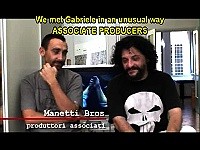
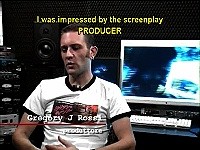
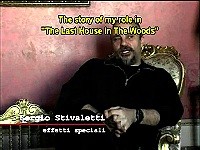
Equally fascinating is Backstage on The Last House in the Woods (39:57). This subtitled behind-the-scenes feature (displayed in lower quality full frame video) intersperses interviews with the crew and set footage of the 18-day shoot. "(The film) is the typical primal piece where all a director's passions and all his life experiences converge in what becomes a major piece of work full of passion and vitality. In essence, we're talking about movie dynamite," says the modest director in one of many memorable quotes.
Albanesi continues to cite his influences, with heavy attention paid to Argento's Phenomena and Unsane (aka Tenebre), two films he "borrowed" from liberally. He chronicles the difficult path to production, which was helped when Antonio and Marco Manetti signed on as associate producers: "The two brothers called me, telling me that they thought it was the best Italian screenplay they'd ever read." (I'm also guessing it was the only Italian screenplay they ever read...)
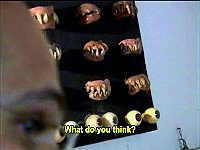
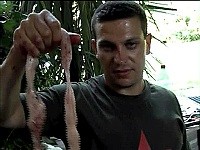
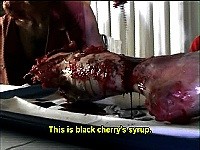
Because no one would buy the film, the brothers encouraged Albanesi to finance it himself: "He ended up believing it more than we did," notes one brother. Plenty of other back-handed compliments are shared, their attempt to politely distance themselves from the project (the other later adds: "(It is) definitely a different movie from what we expected, but not necessarily worse than expected.") First-time producer Gregory J. Rossi also chooses his words carefully: "Structurally, it worked very well."
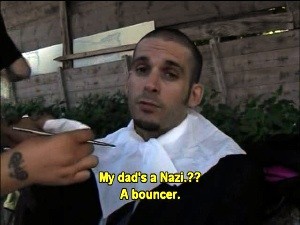
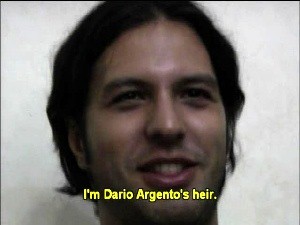
A few more odd moments--including a lot of subtitles with misplaced question marks--are here, including actor Enrico Silvestrin randomly proclaiming "My dad's a Nazi. A bouncer." Huh?! He later muses of his death scene (in the first few minutes of the film): "I still haven't decided if it's a good thing or not" to be killed before the opening credits. (Good thing, Enrico! Good thing!!!) Sergio Stivaletti is also on hand to talk about his effects work. Combined with the audio commentary, this one-two punch is far more entertaining than the film, in a Waiting for Guffman sort of way.
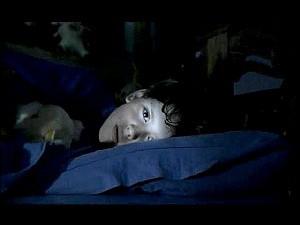
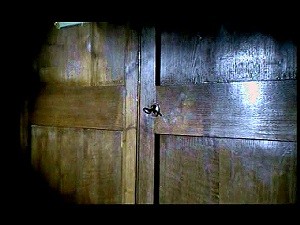
Also included is Albanesi's short film (5:29) L'Armadio (The Closet), a mildly amusing effort with a cruel but predictable (and nonsensical) punch line, and the films DVD trailer (along with trailers for other releases--including the other seven Ghost House Underground titles).
Final Thoughts:
Marred by a weak script and bad acting, editing and camerawork, this Italian effort is amateur in every way. After a snail's pace hour, the final 30 minutes provide a mildly amusing watch if you're into bargain basement gore (and you're a little drunk). The extras--featuring one of the most unintentionally hilarious audio commentaries I've ever heard--are entertaining in a Waiting for Guffman kind of way. Young director Gabriele Albanesi has enthusiasm, energy and passion to spare, but what he doesn't have yet is his own unique style or any original ideas, relying on far too many influences for this film. Rent It, but only if you're in the mood for some unintentional laughs to go with your cheap bloody limbs.
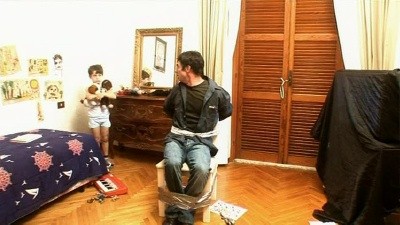
|
| Popular Reviews |
| Sponsored Links |
|
|
| Sponsored Links |
|
|
| Release List | Reviews | Shop | Newsletter | Forum | DVD Giveaways | Blu-Ray | Advertise |
|
Copyright 2024 DVDTalk.com All Rights Reserved. Legal Info, Privacy Policy, Terms of Use,
Manage Preferences,
Your Privacy Choices | |||||||









